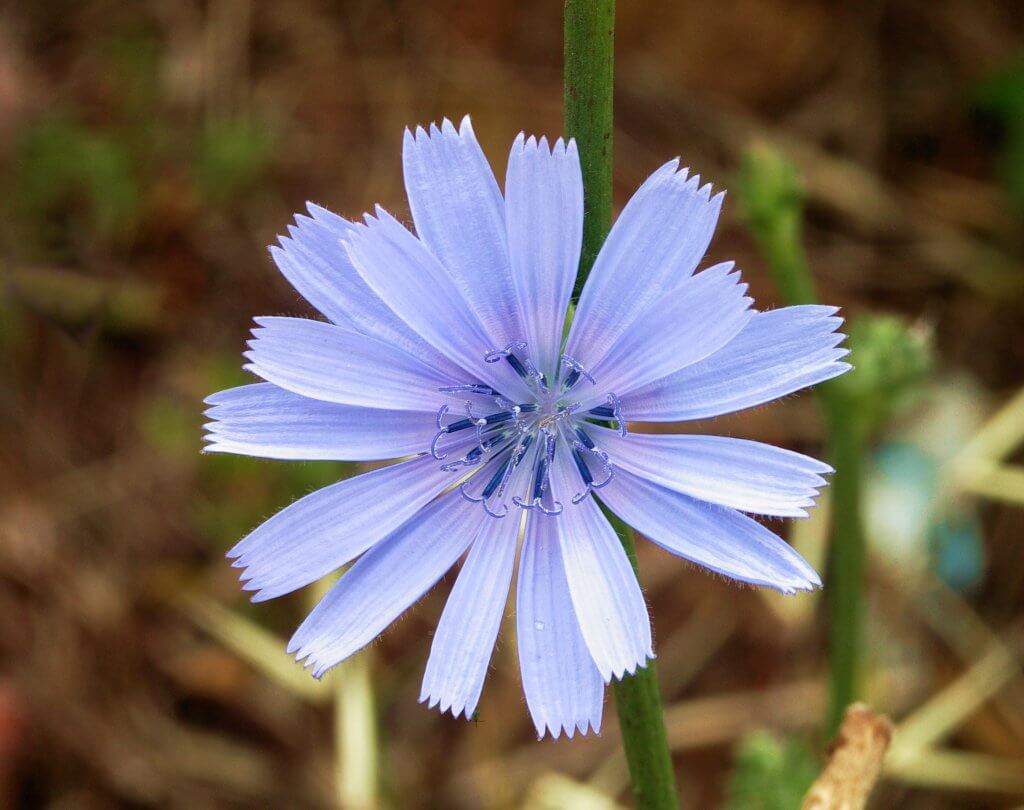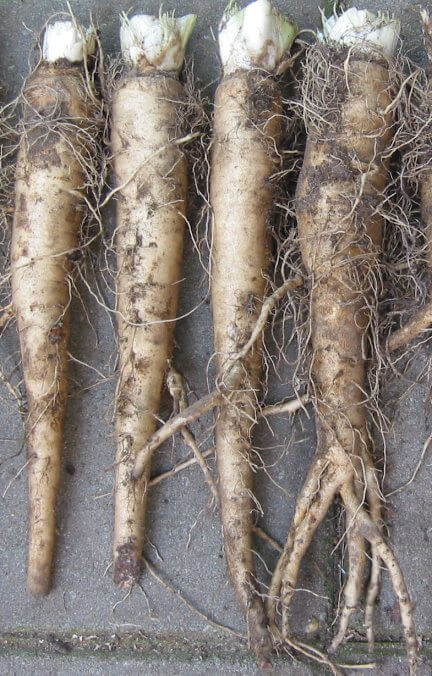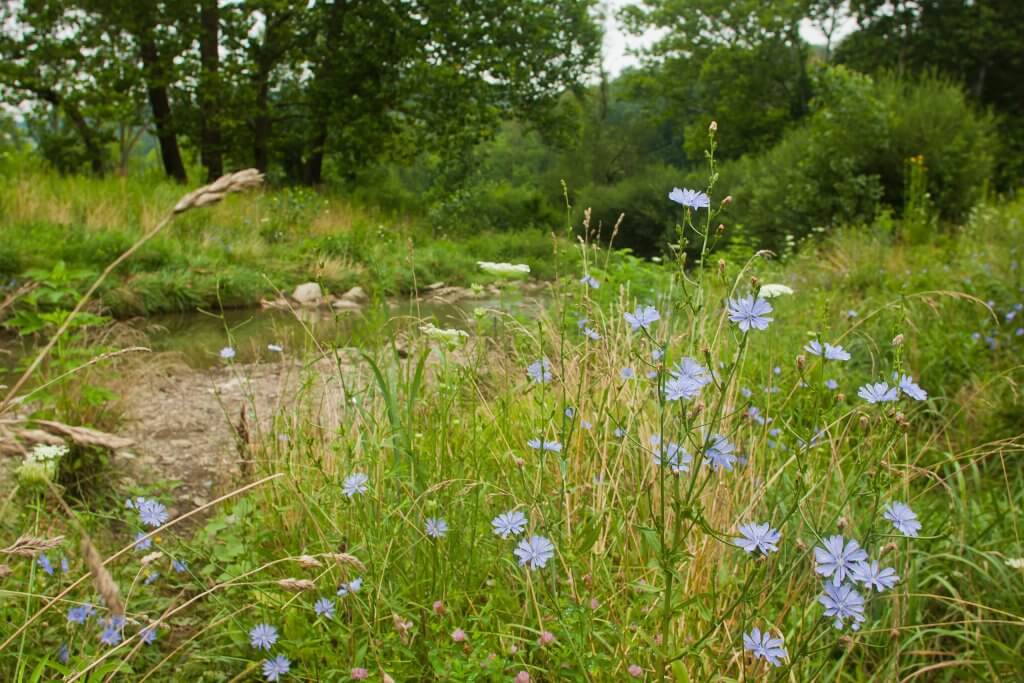Chicory (Cichorium intybus), is a small perennial herb originally native to Europe. Due to farming, and it being used within animal feed, chicory can now be found throughout the world. It is particularly abundant in north America and China. It has a range of old and local names including, blue daisy, blue weed and horseweed.
You’ll find it growing wild in many areas, from roadsides, path edges and along forest walkways and hiking trails.

It is a member of the dandelion family, its bold, radial flowers and leaves having a few small similarities. Another common name for chicory is in fact the ‘blue dandelion’. Chicory petals are a pale blue/purple color, with uniquely toothed ends. The leaves are again fairly similar to the dandelion, but are less heavily serrated. The base of the plants bears wider, lobed leaves, with narrower, lance like leaves forming near the tops of the stems. The main stem itself is grooved and quite woody, reaching no more than a maximum of 100cm.
Edible parts and other uses
The leaves, flowers and also the root of chicory are edible. The roots are actually cultivated commercially and their inulin (sweet carbohydrate) is extracted to create natural sweeteners and even dietary supplements. The roots have also been used to create a coffee, hence another common name they are often referred to as, ‘coffee weed’.

The flowers and young leaves can be added raw straight into salads with a good dressing and other wild leafy greens. They have a mild to bitter flavoring, that becomes stronger in older leaves. It is often recommended that cooking the leaves through will help to improve their flavor. Within Greece, Italy and India, chicory leaves are a staple ingredient in a number of old traditional recipes.
Chicory also has a long history of being used within herbal remedies that treated high blood pressure, stomach pains and inflammations. With modern science however, many other plants and medicines are now viewed as being more effective.
Cautions
Chicory is considered safe to consume, however care should be taken by pregnant women and also those with diabetes. It is possible that compounds within chicory can cause contractions, as well as lowering blood sugar, which could prove very dangerous. These dangers are only usually present if consuming a high amount of chicory, but care should be taken nonetheless.
Foraging
Chicory is fairly abundant once you know what to look for. You may even have a small population growing within your own back yard. Take care if foraging along roads or other urban areas as high pollution levels can contaminate the plant. Foraging in a wild area away from roads is best.
The best time to harvest young leaves is in late spring, as the plant sends out new shoots. However they can be picked year round. The taste will be slightly more bitter, but by boiling in two rounds of water, the bitterness should disappear. If you are after the flowers, you will need to wait until late summer for them to bloom.
The roots are best collected in the fall, especially when the ground is not as dry, allowing you to easily pry the roots out.

Did you know…
During WWI and WWII, chicory was frequently used in Europe as a coffee substitute. Depending on the rations available, a drink would be made using a portion of coffee beans and chicory, or if stocks were empty. A complete chicory coffee would be brewed using the ground roots.
Conclusion
A nutritious and tasty herb with a long history of culinary and medicinal use. It makes a great plant to forage and experiment with. From adding the flowers in a summer salad for a pop of color. To attempting to brew your own ‘caffeine free’ chicory coffee.
—————Written by Hannah Sweet
Hannah is a freelance writer and graphic designer from the UK. With a penchant for travelling, photography and all things botanical, she enjoys writing about a wealth of topics and issues, from conservation and slow living, to design and travel. Learn more about her writing and design services at www.sweetmeanders.co
Many of our readers find that subscribing to Eat The Planet is the best way to make sure they don't miss any of our valuable information about wild edibles.
See our privacy policy for more information about ads on this site






